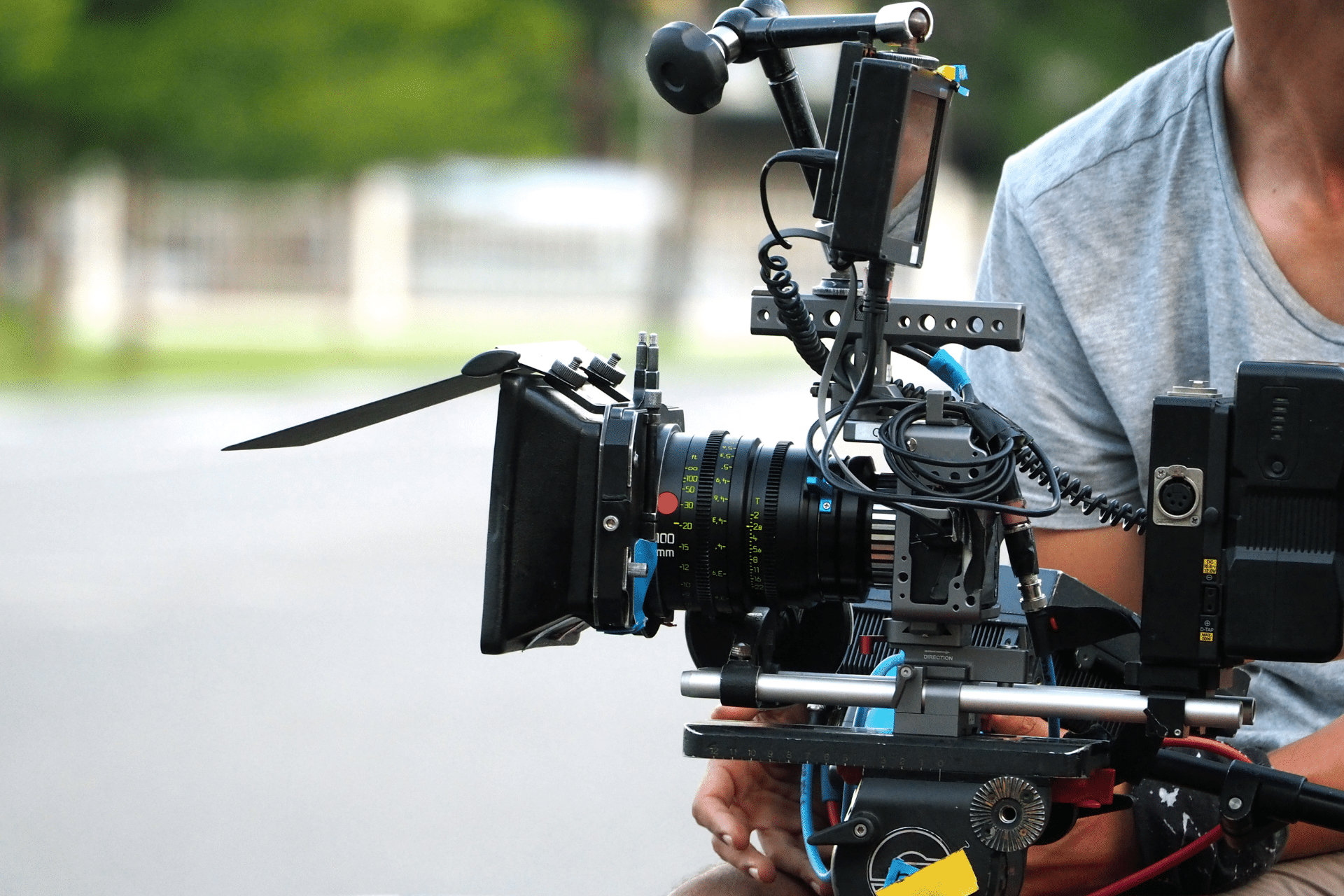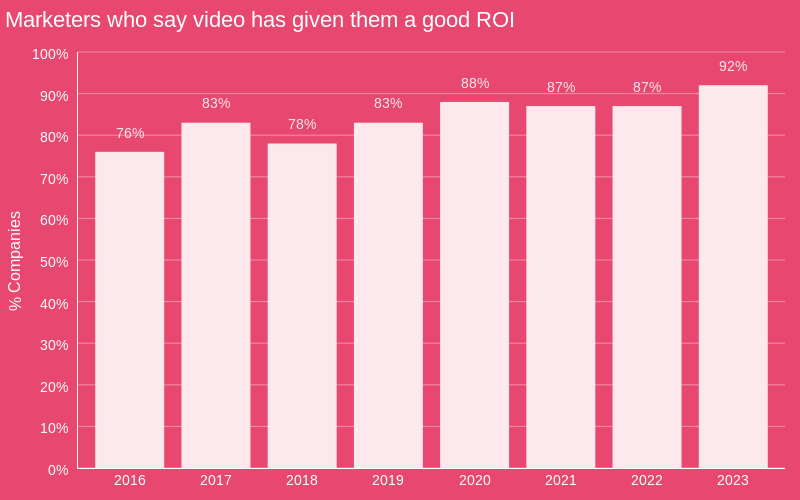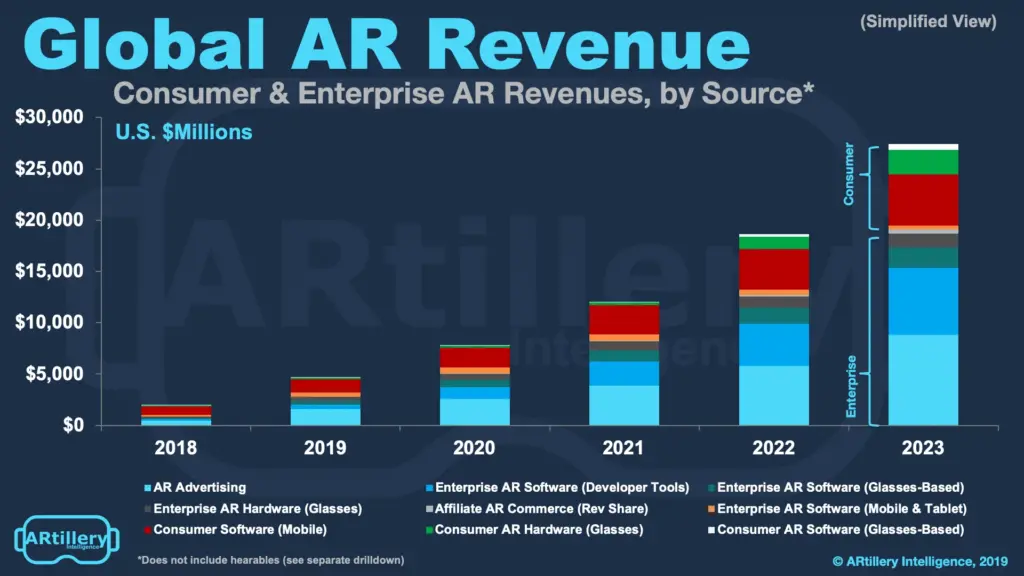November 13, 2023
Exploring the Effectiveness of Video Ads

Video ads are short, engaging clips designed to capture your attention and prompt you to take action. They’ve become a cornerstone in digital marketing strategies, and for good reason.
According to a recent report by Vidyard, 53% of viewers will watch a video all the way through. This explains why video ads are effective in retaining audience attention and driving meaningful engagement.
But what makes them so compelling?
Is it the visual allure, the emotional connection, or the storytelling aspect?
In this blog, we’ll explore these questions and more. We’ll delve into:
- The psychology behind video ads
- Best practices for different platforms
- Key metrics for success
- And emerging trends you can’t afford to ignore
Understanding Consumer Behavior
Consumer behavior is essential for understanding why video ads are so effective. To start with something we all know but often overlook: visual appeal.
Did you know that our brains process visuals up to 600 times faster than words?
What does this mean for video ads? It means they have the power to capture attention almost instantly. Within seconds, a well-designed video can make a lasting impression, and that’s just the beginning.
Now, let’s talk about emotional engagement. It’s not enough for a video to be visually appealing; it has to strike a chord. Whether it’s sparking joy, evoking nostalgia, or creating a sense of urgency, the emotional impact has to be significant. A video that resonates emotionally is a video that drives action.
The combination of visual allure and emotional depth transforms video ads into powerful tools that capture both the eye and the heart and engage the viewers on multiple levels thus enhancing their effectiveness for marketers.
The Power of Storytelling
Storytelling is far more than a bedtime activity; it’s fundamental in the realm of video advertising. One of the reasons why storytelling is impactful is because it enables you to captivate the viewer through a multi-faceted approach that goes beyond mere visuals or dialogue.
Storytelling employs several narrative techniques, each designed to hook the audience in its unique way. Below are the techniques employed and their contributions to captivating storytelling.
- Narrative Arcs: A well-structured story has a beginning, middle, and end. This arc keeps viewers engaged, wondering what will happen next.
- Character Development: Creating relatable characters is important. When viewers see themselves in a character, they become emotionally invested in the story.
- Conflict and Resolution: Introducing a problem and solving it adds drama and closure to make the story memorable.
So, if you’re still pondering why video ads are effective, consider the impact of storytelling — useful for telling your brand’s story and making your audience a part of that story. And when done skillfully, your message sticks with the target audience.
Platform Preferences
Different platforms call for different strategies. A video that’s a hit on YouTube may not necessarily work on Instagram. You need to understand the nuances of each platform for efficient optimization.
For instance, 86% of YouTube viewers say they come to the platform to learn something new, while Instagram users are more likely to engage with brand content compared to other platforms.
How do you optimize for these diverse behaviors and expectations?
Best Practices for Platform-Specific Video Ads
- Channel Tweaking: Think of each platform as a different room in a house. You wouldn’t put the same furniture in the kitchen as you would in the bedroom. Similarly, customize video content to fit the “mood” and user behavior of each platform.
- No TV Ads on TikTok: Don’t try to fit a square peg into a round hole. Traditional TV ads often feel out of place on TikTok, which thrives on short, engaging, and often quirky content.
- Test and Learn: Utilize A/B testing to identify what truly appeals to your audience. By experimenting with different video formats, lengths, and messages, you can refine your strategy for maximum impact.
- Engagement Metrics: Keep a close eye on website traffic lift, search volume increase, and sales shifts to assess your video’s performance. These metrics serve as valuable indicators, helping you fine-tune your approach for future campaigns.
Metrics for Success
Measuring the success of video ads is a fundamental part of any video marketing strategy. According to a survey conducted by Wyzowl, 92% of video marketers enjoy a good ROI from their campaigns, showcasing why video ads are effective.

However, achieving such success requires a keen eye on your campaign’s metrics.
For instance, tracking your campaign’s performance is akin to monitoring your progress with a fitness tracker during a marathon. Without it, you’re running blind, not knowing your pace or distance.
Similarly, metrics act as a roadmap for your video ad campaign. They highlight areas of strong performance and pinpoint where extra effort is needed to achieve your goals.
Next, we’ll explore the two key categories that can guide your campaign: top-of-funnel metrics for initial engagement and bottom-of-funnel metrics for conversions.
Top-of-Funnel Metrics Explained
Top-of-funnel (aka ToFu) metrics are all about generating awareness and sparking interest. They are the initial touchpoints that draw people into your brand’s story. They include:
- PR/News Coverage: This metric gauges how much media attention your video is receiving. High PR coverage can significantly boost your brand’s visibility.
- Shares: For social channels specifically, the number of times your video is shared is a strong indicator of its virality. More shares mean greater reach and potential for engagement.
Bottom-of-Funnel Metrics Explained
Bottom-of-funnel (aka BoFu) metrics focus on actions that lead to conversions, essentially turning interested viewers into customers.
- App Downloads: This metric is vital for mobile-focused campaigns. A high number of app downloads indicates successful customer conversion.
- Customer Acquisition: This measures how many new customers you’ve gained through the video ad. A high acquisition rate means your video is not just engaging but also persuasive.
- Web Traffic: Increased traffic to your website post-video launch indicates that viewers are taking the next steps in their customer journey.
- Sales: Ultimately, the goal is to boost sales. This metric shows the direct financial impact of your video ad campaign.
Understanding these metrics can provide valuable insights into why video ads are effective at different stages of the customer journey.
Incorporating Trends
The arena of video ads is continuously evolving, with fresh innovations influencing its direction. Here are some of the trends that are redefining how we advertise with video:
Interactive Video Ads
Interactive video ads allow viewers to click within the video for a more engaging experience. For example, viewers can interact with product features, make direct purchases, or navigate to additional content within a video, transforming passive watching into active participation.
Augmented Reality Integration
Augmented reality (AR) is no longer a futuristic concept. According to a report by ARtillery Intelligence, the AR advertising market is expected to reach $8.8 billion this year. This staggering figure underscores the growing importance and potential of AR in shaping the future of advertising.

With AR integration, your video ads can overlay digital elements in the real world for an immersive experience.
Personalization and Artificial Intelligence
Personalization is the name of the game in today’s advertising environment. With the help of AI and machine learning, you can customize video ads to individual viewer preferences to make each interaction feel unique and personal.
Short-Form Video
While it’s a common belief that our attention spans are shrinking, recent research suggests that humans have the capacity for sustained attention, especially when engaged in storytelling.
That said, the digital landscape does present a multitude of distractions.
Short-form videos, typically under 30 seconds, offer quick, digestible content that still delivers. They’re especially effective on platforms like TikTok and Instagram Stories, where users both appreciate and expect brevity.
Targeting the Right Audience
To effectively target your audience, it’s essential to consider demographics such as age, gender, and location, while also exploring psychographics to gain deeper insights.
Understanding the motivations behind consumer viewing habits — why they watch, not just who they are — is key to crafting video ads that resonate. Whether your audience consists of thrill-seekers, tech enthusiasts, or homebodies, this knowledge is crucial for creating video ads that effectively engage and captivate.
But how do you gather this information?
Surveys, social media analytics, and customer reviews are excellent starting points. These tools can offer insights into what your audience loves, hates, or simply finds intriguing.
Therefore, as you craft your next video ad campaign, remember that knowing your audience is more than just numbers and data. It’s about understanding the human beings behind those statistics. Combining demographic and psychographic analysis enables you to hit the bullseye.
Budgeting Strategies
Budgeting is far more than a numbers game; it’s a critical component of your video advertising strategy. According to Planful’s insights on marketing budget allocation, strategic budgeting is key to achieving high ROI, as it involves setting clear goals, diversifying your strategy, and leveraging data for decision-making. This approach maximizes your investment and also sets the stage for sustainable success.
Therefore, the focus should be on spending wisely, not just the amount spent.
Cost-Per-Click vs Cost-Per-View
Understanding the difference between Cost-Per-Click (CPC) and Cost-Per-View (CPV) is essential for strategic budget allocation. CPC is generally used for campaigns aimed at driving website traffic, while CPV is more suited for brand awareness.
Knowing which metric aligns with your campaign goals can help you allocate funds more effectively which ensures you get the most bang for your buck.
Maximizing ROI
To maximize your return on investment, focus on channels and formats that have proven to be high-performing. Use analytics to identify where your audience is most engaged and allocate more budget to those areas. It’s like investing in a winning stock; you double down where you see growth and potential.
Final Steps for Video Ad Success
This blog has equipped you with the tools you need to excel in video advertising. We’ve covered everything from the science of visual appeal and emotional resonance to the art of storytelling.
Remember, each channel has its own set of rules, so make sure to tailor your content accordingly.
Metrics are your best friend; they provide the roadmap to your campaign’s success. And don’t overlook the future — interactive ads and augmented reality are changing video marketing.
So, what’s next on your video advertising journey?
If you’re intrigued by the possibilities and ready to take your video advertising to the next level, we’re here to help. We specialize in creating impactful, memorable videos for your specific needs.
..

